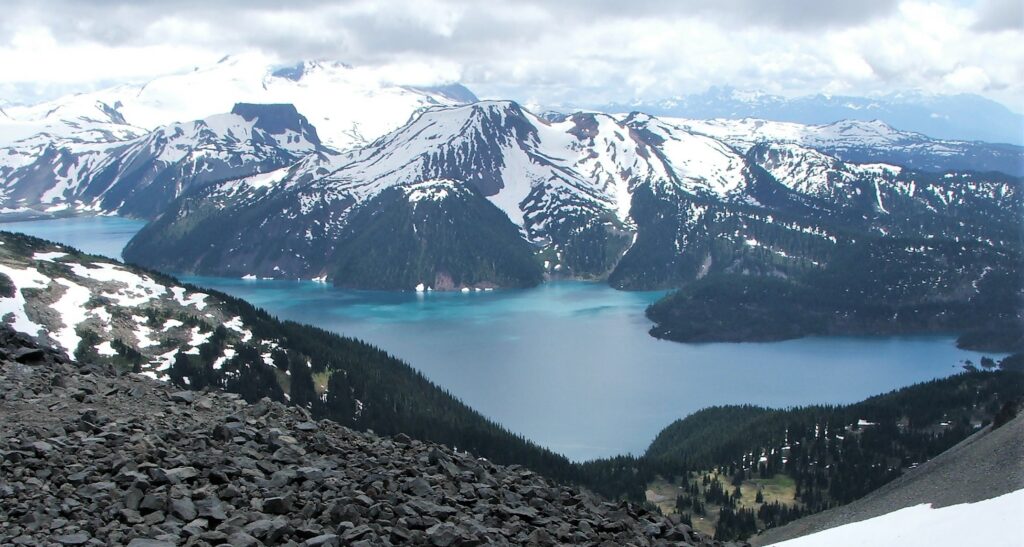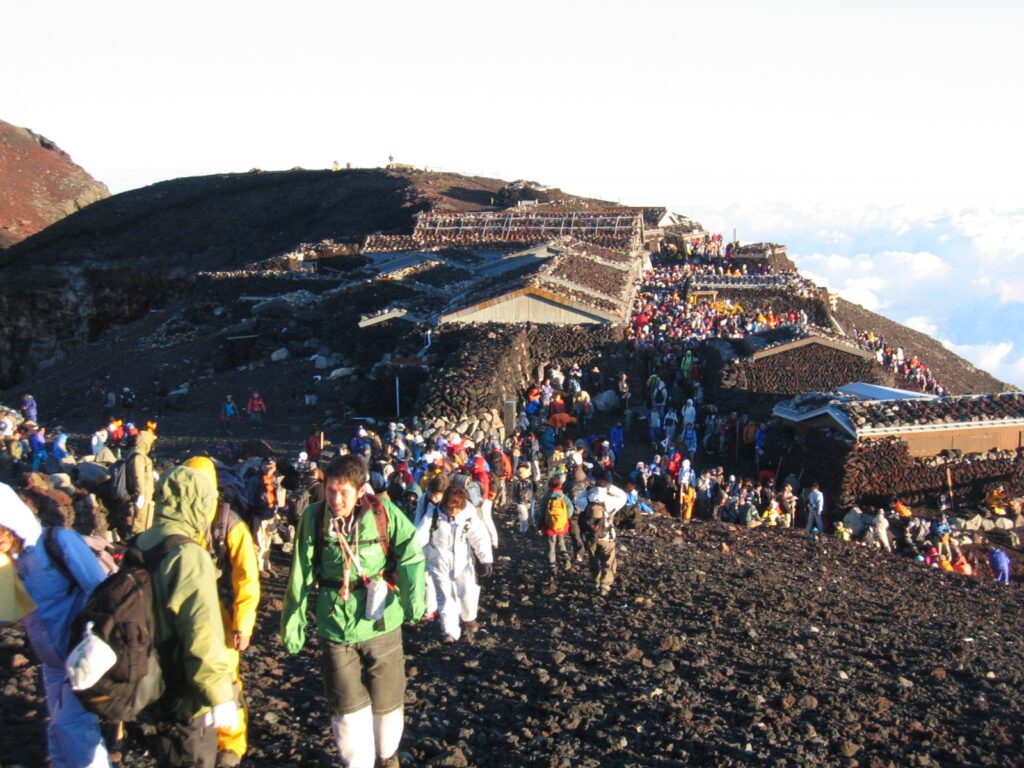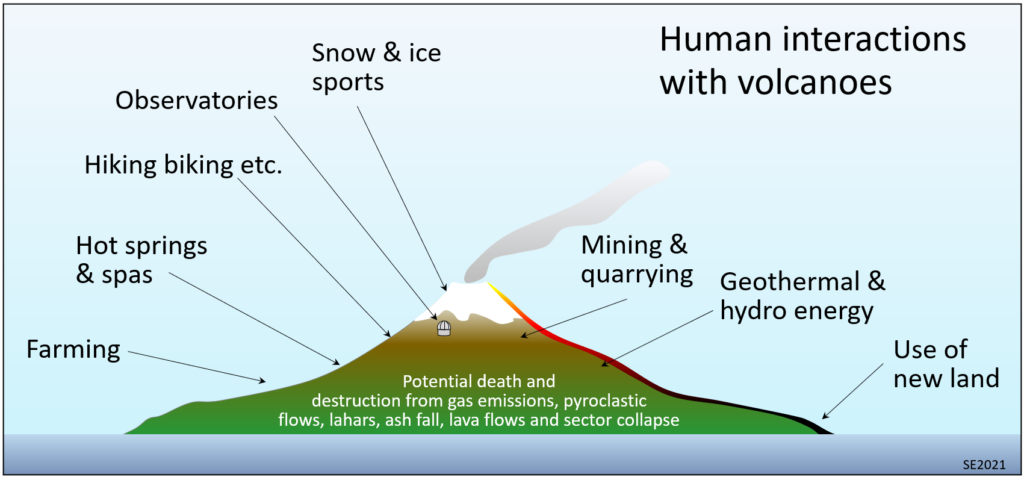7.6 Effects of Volcanic Eruptions on Humans and on Earth Systems
Humans have a love-hate relationship with volcanoes. For many reasons humans are attracted to areas with active volcanism, but for several others that we’ve already discussed, they would be wise to stay away.
The key reason that humans like living around potentially active volcanoes is that the soil tends to be fertile, and thus there is the potential to grow enough food to live. For example, some parts of the area around Mt. Merapi in Indonesia (Figure 7.0.1) can support subsistence populations of 8 to 10 people per hectare.[1] In comparison, the typical farm in the United States can feed just under 1 person per hectare (US Farm Bureau).
Volcanic soil is good for a number of reasons. One is that volcanic ash and rock fragments are rich in volcanic glass and under weathering conditions glass breaks down quickly to clay minerals so that productive soil can form within 200 to 300 years in favorable climates.[2] Another is that the clays that form from volcanic parent materials are effective at holding onto nutrients such as phosphorous. A third is that volcanic lava or tephra are typically quite rich in some important plant nutrients, such as magnesium and sulphur. Volcanic regions all over the world are know for their fertile soils. Some examples, apart from Indonesia, include the volcanic areas in Italy, much of northern New Zealand, Japan, Hawaii, parts of Africa, and much of the Caribbean.
Volcanoes are also valued for their scenic beauty and recreational opportunities. An example is the Mt. Garibaldi area of southwestern British Columbia (Figure 7.6.1), but there are hundreds of other scenic volcanoes around the world, some of which are immense tourist and hiker attractions (Figure 7.6.2). Many volcanoes are also venues for a wide range of winter sports, and for hot springs, spas and mudbaths. Volcanic regions are also an excellent source of geothermal heat for both electricity and district heating, and of hydroelectric energy from streams.


Many volcanoes are also venues for a wide range of winter sports, and for hot springs, spas and mudbaths. Volcanic regions are also an excellent source of geothermal heat for both electricity and district heating, and of hydroelectric energy from streams. Figure 7.6.3 provides an overview of some of the ways that humans interact with volcanoes, and some of the risks associated with living nearby.

Volcanism and Earth Systems
As already noted in Chapter 1 and Chapter 3, volcanic eruptions contribute to the Earth’s systems in important ways. For starters, it is widely believed that the water in the Earth’s oceans is at least partly derived from volcanism, and the Earth would not have much in the way of systems without water.
Some of the key roles of volcanic eruptions in Earth systems are as follows:
- Cycling solids (mostly silicates) from depth in the mantle and the crust to surface,
- Cycling volatiles (water and gases) from depth, and thereby influencing organisms and the climate,
- Ejecting both solids and volatiles high into the atmosphere,
- Cycling thermal energy from depth,
- Creating solid surfaces (e.g., islands) that will be colonized by organisms, and
- Creating sloped surfaces (mountains) that influence weather and climate patterns, and will be eroded and weathered.
All of these products subsequently contribute to other Earth system processes in myriad ways.
Media Attributions
- Figure 7.6.1 Photo by Isaac Earle, used with permission, CC BY 4.0
- Figure 7.6.2 Mt. Fuji Summit by Derek Mawhinney, public domain image via Wikimedia Commons, https://commons.wikimedia.org/wiki/File:Mt_Fuji_Summit.jpg
- Figure 7.6.3 Steven Earle, CC BY 4.0
